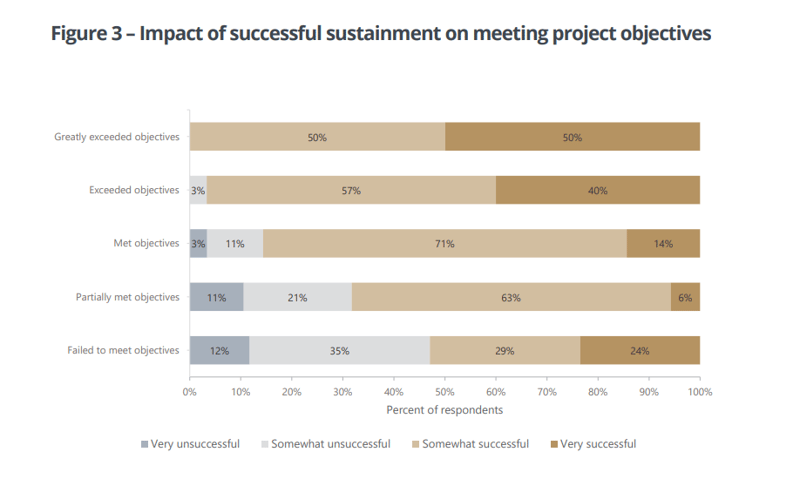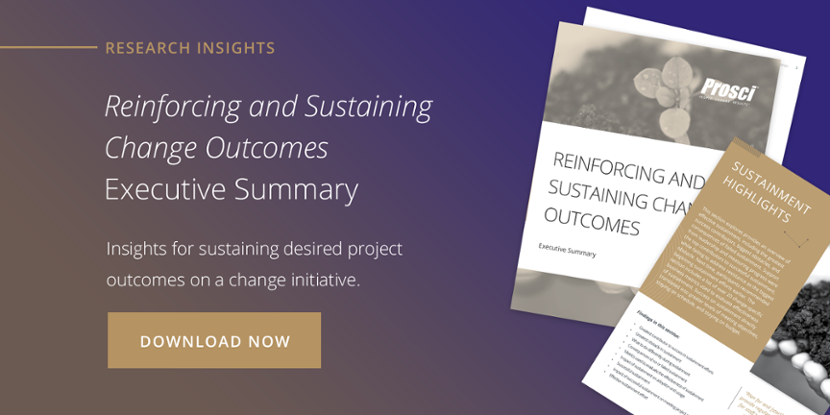Consequences of Not Actively Trying to Sustain Your Changes

2 Mins
Updated: August 10, 2022
Published: October 17, 2018

Organizations of all shapes and sizes, even those that employ world-class change management on their project, can struggle to make changes stick after the go-live date. What many change managers, sponsors and leaders in these organizations fail to realize is that launching change is not the end of their work.
The Fallout From Failed Sustainment Efforts
The most crucial change management activity is employing a reinforcement and sustainment effort to make change stick. In our 2018 Reinforcing and Sustaining Change Outcomes study, more than 600 participants told us the real-life consequences of failing to sustain a change. For these participants and their organizations, the risks of failing to sustain a change are great. Here’s a look at the five most common consequences of failed sustainment efforts, according to our recent sustainment study.
1. Employees revert to pre-change state
“It’s important to remember that the previous way of doing things is people’s natural and preferred state.”
Our job as change managers is to ensure that the organization successfully employs a new tool, process or system. Using a system, tool or process for only a few weeks before employees go back to the old way of working is a failure on our parts. We don’t do change management to check a box. We do it to make people adopt and use the new system, tool or process forever.
2. Project teams must redo work
Failing to reinforce change means that project teams must redo work, and not just change management work. Few change initiatives exist in a void where only one group of people must change how they do their job. In reality, changes impact a matrix of teams and functional groups. Getting that group to change is only one part of a larger initiative going on in the organization. Failure to sustain a change on our end will cause other parts of the business to redo their launches to accommodate our shortcomings.
3. Projects fail
Sometimes we only have one shot to succeed at a change. Whether it’s budget, time or resource constraints, we must succeed the first time because we may not get a second chance. When we fail to sustain a change, we risk a project failing altogether. Change failures cost not only time and money, but can also rob the organization of motivation when the next change comes around, potentially adding to a history of failed change and increasing employee attrition.

4. Change management credibility drops
As change managers, we deliver desired project outcomes through adoption and usage, not three months of desired project outcomes that will gradually start petering off as impacted groups abandon the change. When we fail to sustain the change, we fail as change managers and senior leaders will begin to question the value of change management as a discipline.
5. Project goals and outcomes are only partially met
If you are familiar with the Prosci Methodology, you have heard about the “swiss-cheese future state.” This is how we describe a future state in which only some of the desired project outcomes stick. Failing to plan sustainment measures is the surest way to experience this hole-riddled future state.

Actively Sustaining Change Outcomes
Our research shows that failing to sustain a change can have long-reaching consequences on our projects, our organizations, and our careers. It is therefore crucial to put in place efforts and initiatives designed to sustain a change.


